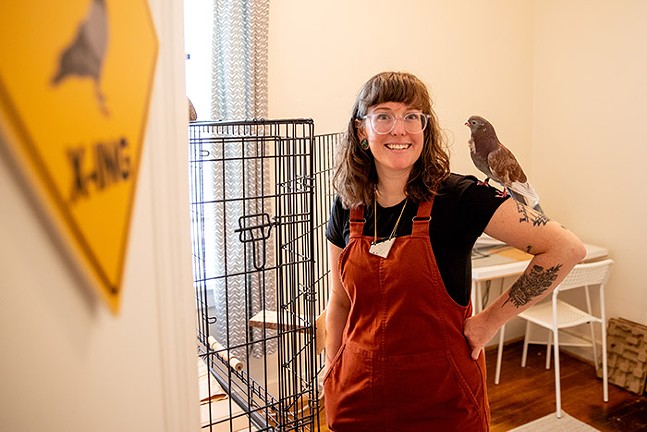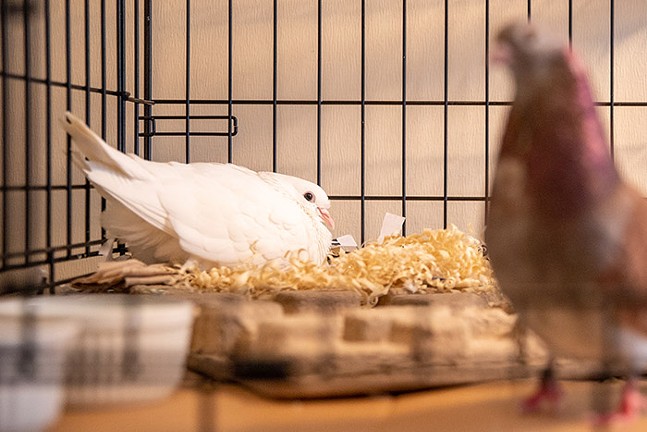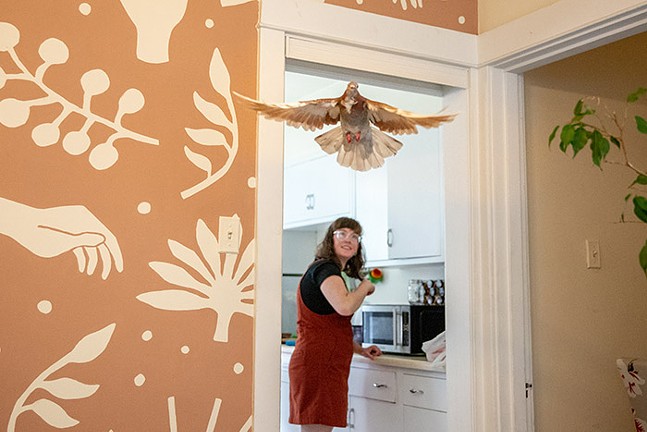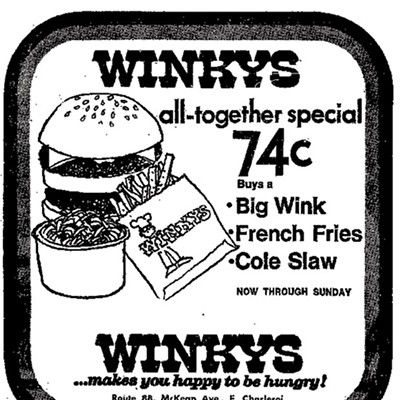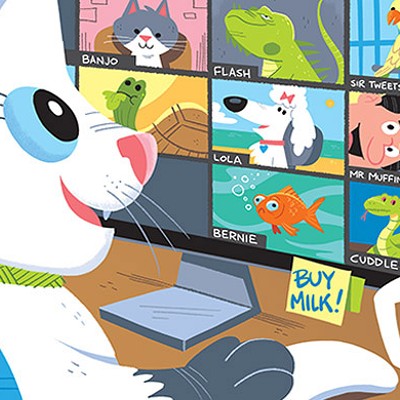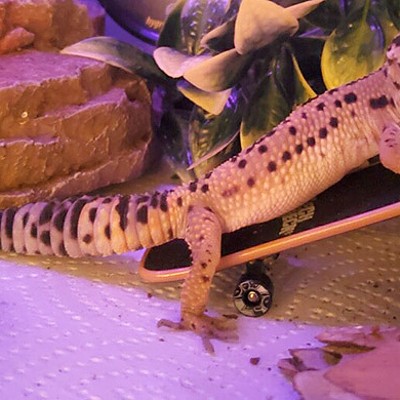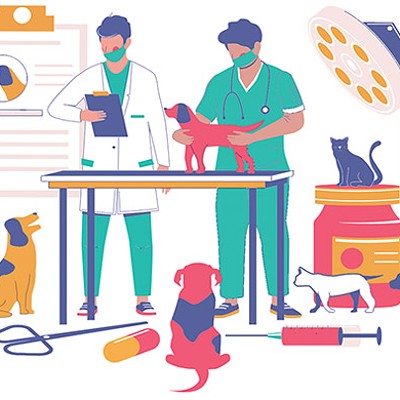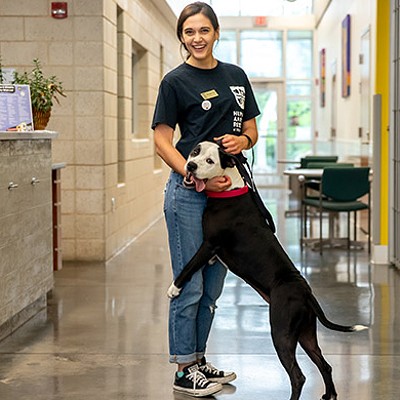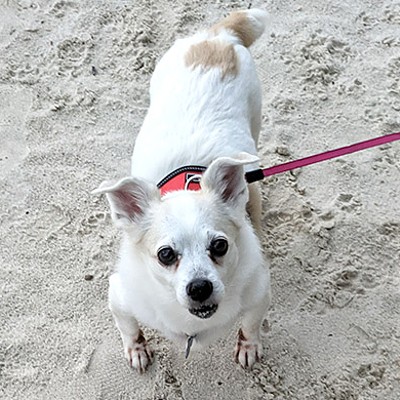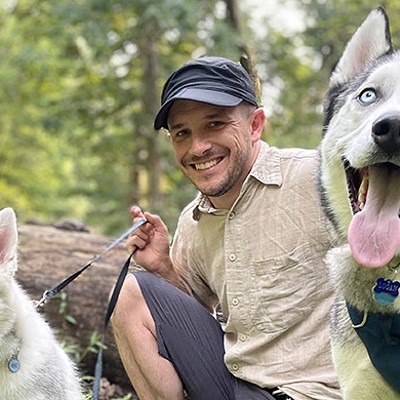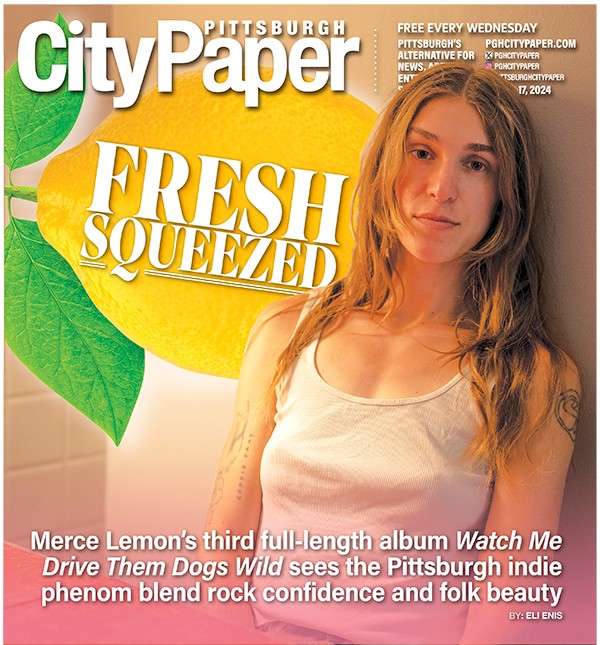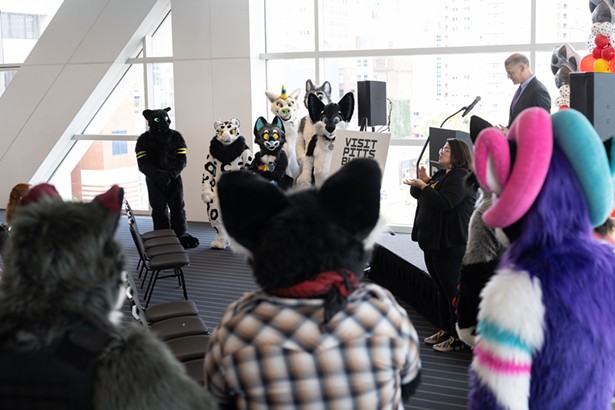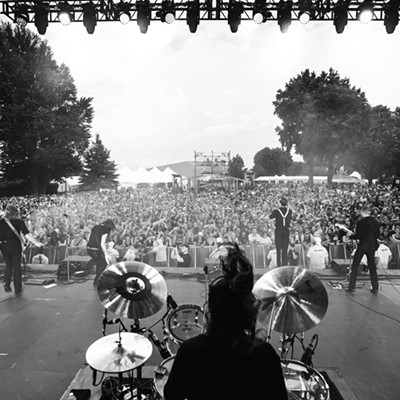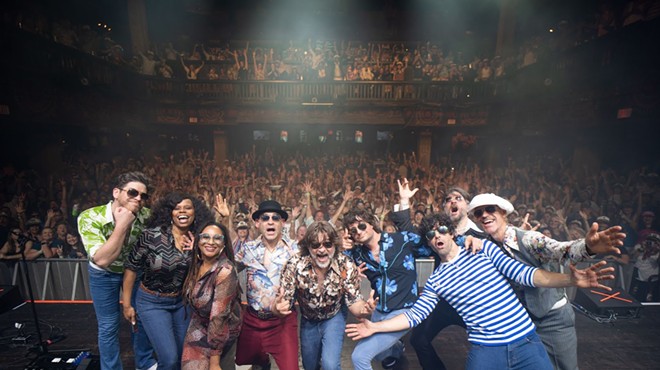Meet Pittsburgh’s pigeon whisperer: Kim Garrett
[
{
"name": "Local Action Unit",
"component": "24929589",
"insertPoint": "3",
"requiredCountToDisplay": "1"
}
]
If you live or work in Downtown Pittsburgh, chances are you’ve become familiar with pigeons. Often seen strutting alongside humans crossing busy streets, Downtown pigeons are charismatic and funny. Commonly derided as “rats with wings” and “dirty,” pigeons are sometimes subjected to cruel treatment by the humans they live among.
But Kim Garrett wants to challenge your perceptions of these city birds. Garrett, a PhD candidate at the University of Pittsburgh’s Department of Environmental and Occupational Health, has two pet pigeons named Cooper and Lady. Some might find that odd, but she says they do wonders for her mental health.
Lady and Cooper are kept in an extra large dog crate in their own room, with newspaper lining the bottom section of the crate. They have a container for bird seed, one for water, and one for “grit,” which Garrett says is made up of oyster shells or extra little rocks for the birds to “grind things up” and provide the birds with a source of calcium.
“That's why pigeons on the street look like they are eating asphalt or rocks and it's like, ‘Why are they doing that?,’” she says. “It's because they need to have rocks in their system to grind up the whole bird seed.”
Garrett says because of misconceptions about pigeons, she often gets asked silly questions about how she keeps them, like if she will get bird flu, or if they poop all over her house. She says people of younger generations tend to be more curious and inquisitive. There is a misconception that she just took Cooper and Lady off the street, but there are pigeon rescues.
Cooper, a beautiful bronze and cream colored pigeon, was rescued from a breeder for “fancy pigeons” that are bred for their looks. Lady was rescued from a dove release. Popular at funerals and weddings, dove releases often leave birds confused and susceptible to predators like hawks.
Garrett says she first developed an interest in pigeons at a young age watching Sesame Street. Bert, one of the characters on the show, liked pigeons and often collected items like paper clips. He also had a pigeon friend named Bernice. Garrett grew up in New Wilmington, Pa., and she didn’t really see pigeons around in real life.
“Growing up, I didn't really see pigeons in my small rural town, but I associated that with the big city,” she says. “And so, I remember in ninth grade we took a trip to Pittsburgh to see a show and stuff for school, and there were pigeons all over and I was like, ‘Oh my gosh, it's just like in Sesame Street, this is a big city, there are pigeons here.’”
Since then, Garrett has become a bit of an expert on pigeons and loves to share interesting facts about the birds. She says they were the first domesticated bird, even before chickens. Pigeons were also briefly used for food and, of course, many know the history of them as carrier animals. When carrier pigeons went out of fashion due to the development of telephones and a postal system, pigeons were still very comfortable in the city atmosphere, and stayed.
“So they fell out of fashion and they were so widespread and people just kind of let them go,” says Garrett. “And so they found their own kind of safe spots in urban areas. And when they found those safe spots, they just had families and hung out there. That's why we have them all over. They’re on every continent except for Antarctica.”
Garrett also says pigeons mate for life, and even though they may leave the nest and mate with other pigeons, they always come back to their nest and their partner pigeon.
If you don’t have an interest in owning a pigeon, there are still ways to be a friend to those you encounter on the streets. Feeding pigeons is OK, but stay away from bread. Garrett says cut-up fruits, vegetables, and bird seed are the best meals for our feathered friends.
But Kim Garrett wants to challenge your perceptions of these city birds. Garrett, a PhD candidate at the University of Pittsburgh’s Department of Environmental and Occupational Health, has two pet pigeons named Cooper and Lady. Some might find that odd, but she says they do wonders for her mental health.
Lady and Cooper are kept in an extra large dog crate in their own room, with newspaper lining the bottom section of the crate. They have a container for bird seed, one for water, and one for “grit,” which Garrett says is made up of oyster shells or extra little rocks for the birds to “grind things up” and provide the birds with a source of calcium.
“That's why pigeons on the street look like they are eating asphalt or rocks and it's like, ‘Why are they doing that?,’” she says. “It's because they need to have rocks in their system to grind up the whole bird seed.”
Garrett says because of misconceptions about pigeons, she often gets asked silly questions about how she keeps them, like if she will get bird flu, or if they poop all over her house. She says people of younger generations tend to be more curious and inquisitive. There is a misconception that she just took Cooper and Lady off the street, but there are pigeon rescues.
Cooper, a beautiful bronze and cream colored pigeon, was rescued from a breeder for “fancy pigeons” that are bred for their looks. Lady was rescued from a dove release. Popular at funerals and weddings, dove releases often leave birds confused and susceptible to predators like hawks.
Garrett says she first developed an interest in pigeons at a young age watching Sesame Street. Bert, one of the characters on the show, liked pigeons and often collected items like paper clips. He also had a pigeon friend named Bernice. Garrett grew up in New Wilmington, Pa., and she didn’t really see pigeons around in real life.
“Growing up, I didn't really see pigeons in my small rural town, but I associated that with the big city,” she says. “And so, I remember in ninth grade we took a trip to Pittsburgh to see a show and stuff for school, and there were pigeons all over and I was like, ‘Oh my gosh, it's just like in Sesame Street, this is a big city, there are pigeons here.’”
Since then, Garrett has become a bit of an expert on pigeons and loves to share interesting facts about the birds. She says they were the first domesticated bird, even before chickens. Pigeons were also briefly used for food and, of course, many know the history of them as carrier animals. When carrier pigeons went out of fashion due to the development of telephones and a postal system, pigeons were still very comfortable in the city atmosphere, and stayed.
“So they fell out of fashion and they were so widespread and people just kind of let them go,” says Garrett. “And so they found their own kind of safe spots in urban areas. And when they found those safe spots, they just had families and hung out there. That's why we have them all over. They’re on every continent except for Antarctica.”
Garrett also says pigeons mate for life, and even though they may leave the nest and mate with other pigeons, they always come back to their nest and their partner pigeon.
If you don’t have an interest in owning a pigeon, there are still ways to be a friend to those you encounter on the streets. Feeding pigeons is OK, but stay away from bread. Garrett says cut-up fruits, vegetables, and bird seed are the best meals for our feathered friends.

